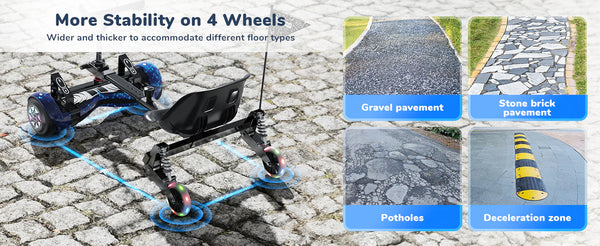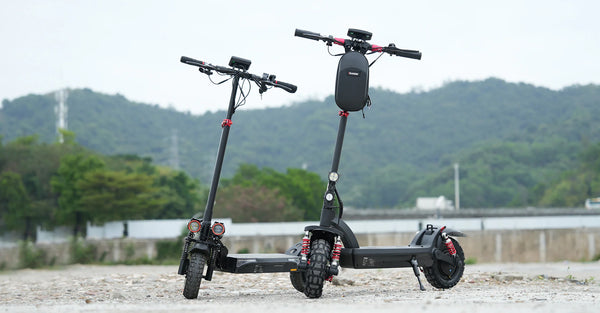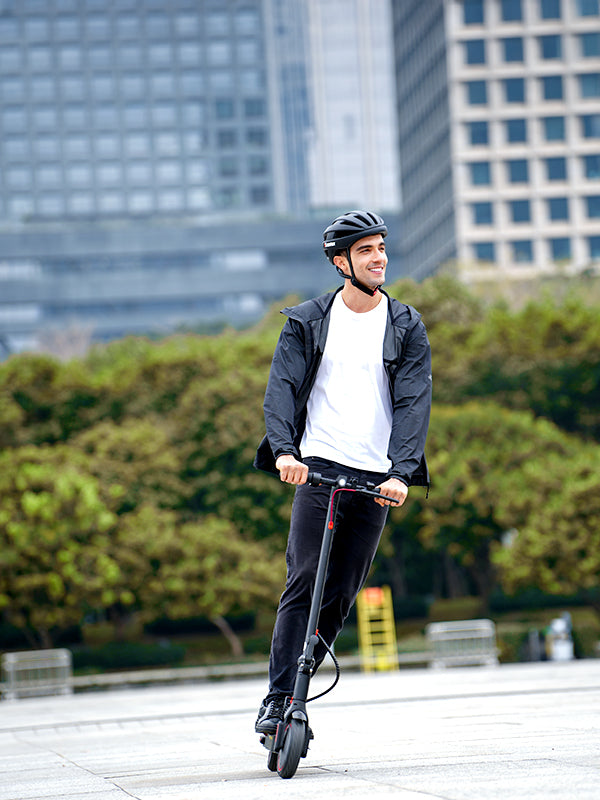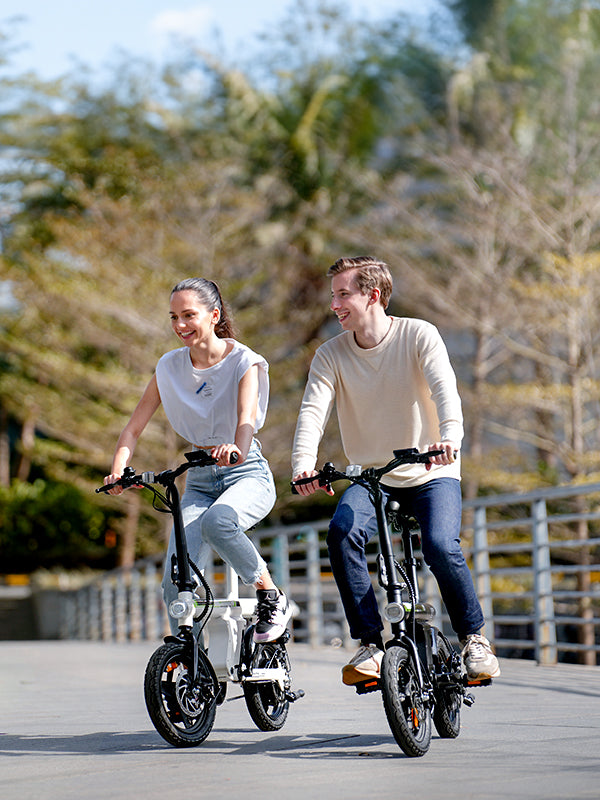
The Ultimate Guide to Hoverboard Safety and Regulations
Hoverboards - self-balancing scooters or hands-free segways - have become very popular recently. These fun, futuristic gadgets let you glide around smoothly. But worries about safety and unclear rules make people wonder: are hoverboards legal in the UK?
The short answer is yes, hoverboards are legal to own and use in the UK, but there are limits on where you can ride them. Hoverboards are considered Personal Light Electric Vehicles (PLEVs). They are treated differently than cars, motorbikes, or mobility scooters. Using a hoverboard on public roads, pavements, cycling paths, parks, shopping centres, and most other public areas is illegal under the Road Traffic Act and Highway Code. Let's discuss Hoverboard safety and Hoverboard regulation in detail.
Understanding Hoverboards
Before talking about the rules, let's quickly cover the basics.
What Are Hoverboards?
Hoverboards are self-balancing scooters with two motorised wheels connected to a platform for the rider's feet. They utilise gyroscopes and accelerometers to detect the direction a user leans and move accordingly at up to 12 mph.
Read more: What is a hoverboard?
How Do Hoverboards Work?
Hoverboards have sensors that detect even minute shifts in body positioning. When a rider leans forward, the wheels turn forward, and vice versa for leaning backwards or sideways. This creates a smooth, seamless gliding motion.
Types of Hoverboards
There are many different hoverboard models and sizes. Performance-focused hoverboards built for tricks and rugged terrain differ from basic options for younger riders. Prices range from £100 to over £800 depending on features.
Hoverboard Safety Concerns
While exhilarating to ride, hoverboards can pose risks if users aren't adequately prepared. Let's explore the main safety concerns and how to avoid them.
Battery Fires
Poorly made or damaged lithium-ion batteries can overheat, ignite and cause hoverboard fires. Purchasing from a reputable manufacturer using brand-name batteries is crucial.
Genuine UL 2272-certified hoverboards have passed rigorous electrical and battery safety tests. Counterfeit boards may cut corners, so check for the UL mark to ensure your hoverboard meets quality and safety standards.
Never leave a hoverboard charging unattended or near flammable materials. Use the charger that came with your specific model, and don't charge for longer than recommended.
Instability and Falls
Hoverboards require core strength and balance to manoeuvre safely. First-time riders should practise in open areas without obstacles until they become comfortable.
Attempting sharp turns or fast speeds too quickly raises the risk of falls, collisions or losing control. Build up your abilities gradually before riding in crowded environments.
Collisions and Accidents
Hoverboards' compact size and quiet operation can make them difficult for pedestrians and motorists to notice. Riders must remain vigilant to avoid crashes.
Scan your surroundings and keep safe distances from walkers or cars. Avoid distractions from mobile phones or headphones. Maintain slower speeds in congested areas.
Lack of Protective Gear
Protective gear like helmets and pads reduces potential injuries from falls or accidents. Gear use is especially crucial for inexperienced riders.
Always wear a helmet when riding. Consider adding knee pads, gloves and elbow pads as well. Ensure gear fits appropriately and securely. Replace equipment after any significant impacts.
Hoverboard Regulations
Next, let's cover the critical regulations and laws regarding operating hoverboards in the UK that all responsible riders should know.
Legal Classification of Hoverboards
Hoverboards are classified as Personal Light Electric Vehicles (PLEVs) and other micro-mobility options like e-scooters and electric skateboards. They are treated as distinct from mobility scooters or motor vehicles.
Road Traffic Act and Highway Code
PLEVs cannot be legally used on public roads, pavements or cycling paths under the Road Traffic Act 1988 and Highway Code. Hoverboard use is restricted to private property only, with the landowner's permission.
Pavement and Public Space Restrictions
Due to safety and access concerns, many local authorities also prohibit hoverboards on pavements, in parks, shopping centres, and other public areas. Check your council's regulations.
Age and Weight Restrictions
There are no national age, height or weight limits for operating hoverboards in the UK. However, some retailers or manufacturers impose restrictions, typically recommending users be age 8 or older. Consult your user manual.
Safety Certifications and Standards
Genuine UL 2272 certification is crucial for electrical safety and fire prevention. UKCA and CE marks also indicate conformity with European health and safety standards.
Insurance and Liability
There is no legal requirement for hoverboard insurance. However, coverage can provide protection in case an accident on your hoverboard damages property or causes injuries. Compare third-party liability policies.
Best Practices for Safe Hoverboard Use
Let's wrap up with some top tips for safely enjoying your hoverboard:
- Purchase from Reputable Sellers: Buy from reputable brands to ensure your hoverboard meets quality standards. Review safety certifications and avoid unbranded boards, which may cut corners.
- Wear Protective Gear: Always wear an approved safety helmet and consider elbow/knee pads to prevent injury in falls. Inspect gear regularly for any damage.
- Learn to Ride Properly: Practice in open areas without hazards to build skills. Don't rush into crowded spaces or attempt stunts beyond your comfort level.
- Maintain Your Hoverboard: Check for damage before each ride. Follow the user manual for charging, storage, cleaning and when to replace components. Don't modify your board.
- Be Aware of Your Surroundings: Pay attention to pedestrians, potential hazards and terrain changes. Adjust your riding accordingly and anticipate obstacles early.
Conclusion
We hope this guide has helped explain essential hoverboard safety precautions and the regulations around operating them legally in the UK. Follow the tips provided to confidently integrate hoverboarding into your lifestyle safely.
Hoverboards can be an enjoyable transportation option with proper safety gear, training and an understanding of the rules in your region. Remember to put safety first, respect pedestrians and have fun gliding around!
FAQs
Q1: What safety gear should I wear when riding a hoverboard?
A1: Always wear a helmet. Consider knee pads, elbow pads & gloves too. Inspect gear regularly and replace it if damaged.
Q2: Are there any age restrictions for using hoverboards in the UK?
A2: No national age limits, but some brands recommend riders be age 8+. iHoverboard also recommends riders be age 8+. Check the manual and start slow if you are young.
Q3: How can I ensure my hoverboard meets safety standards?
A3: Look for genuine UL 2272 certification, UKCA or CE marks indicating it passed quality tests.
Q4: What should I do if I suspect my hoverboard is faulty or unsafe?
A4: Stop using it immediately. Do not charge it. Contact the retailer or manufacturer for advice.
Product Category
Recent Posts

Up to 50% Off! Our Black Friday 2024 Event Is HERE!

Best Hoverboard with Seat: K3 Hoverboard Go-Kart Guide!

Go-Kart: The Complete Guide to Hoverboard with Seat

Electric Scooter Wheels: Solid Tires vs Pneumatic Tires





















































Still, need help? Contact Us: support@ihoverboard.com
What's the option? Check out the option now!
Leave us a message